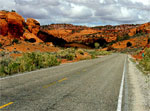
It’s that time of year, and all that, so I thought I’d put together something of a christmas list: What can you get your photography-addicted buddy for the holiday season?
But first, let’s help the readers of this post with a poll. Here’s your chance to tell people what you’d really like!
You are a photographer. What would you prefer to get for Christmas?
Finding gifts for a photographer is difficult at the best of times. When you remember that photography gear is really bloody expensive, the truth hits home: What can you get for a photographer who’s got it all, without breaking the bank?
Up to £10 / $20
You cheapskate! Only joking. It’s quite difficult to buy for photographers on a tight budget, but on the other hand, it allows you to get creative. There are some photography books out there that cost less than £10, and there are a series of great magazines on sale. If you are on a limit, you could always buy one magazine now, and add a card saying that you’ll buy them the magazine for the next few months to come. It’s not quite a subscription, but at least you get off without bankrupting yourself!
Of course, there are other things you could do for very little money. If you are buying for a loved one, get a photographer mate to take photos of you, use the £10 to get the prints made, and give them a picture of you to carry around, hang on the wall, or add to an album – always a welcome gift! You could even use PhotoJoJo’s fantastic mailable photo frames. Stroke of genius!
Finally, it is terribly naughty to subscribe someone to a mailing list without asking them, but the best thing you can do is to subscribe your mate to PhotoJoJo. Those guys send out a couple of e-mails a month, and they really know their stuff. Best of all? It’s completely free!
It’s an unusual gift, for sure, but hey – no photographer should be without their own domain! Even if they aren’t interested in building up a website or blog for themselves, you can easily redirect most domains to a specific Flickr page or DeviantArt gallery. Combine the internet domain with some Moocards with the new domain printed on one side, and some of their photos on the other side, and you’re definitely going to get a smile out of them!
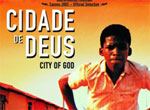 £10 also gets you DVDs so you could could consider getting a film which is vaguely photography themed. City of God (Cidade de Deus) is a fantastic film which is about a Brazilian kid who turns into a photographer for a newspaper. Gripping, moving, not too expensive, and photography related – what more could you want? Of course, you get extra bonys point and street cred for buying a foreign arthaus film! (US / UK
£10 also gets you DVDs so you could could consider getting a film which is vaguely photography themed. City of God (Cidade de Deus) is a fantastic film which is about a Brazilian kid who turns into a photographer for a newspaper. Gripping, moving, not too expensive, and photography related – what more could you want? Of course, you get extra bonys point and street cred for buying a foreign arthaus film! (US / UK
Sure, it’s a cop-out, but if you’re really struggling – or if you’d rather contribute to a bigger gift – why not get vouchers for a big on-line store? Amazon, for example, sell most types of photography gear, along with books etc. Shoppers can combine several vouchers towards a big purchase, and they can even add some money themselves as well, if they’re after a bigger item. Get the gift certificates from Amazon US / UK
Up to £20 / $40
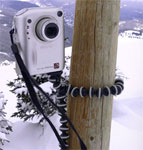 In this price group, the definite winner is the Gorilla Pod. Sure, it looks daft as a paintbrush, but it always gets looks. I got one for review from Joby recently, and I had to call them up and ask if I could please keep it – it really is that good. Basically, it’s a fully-fledged tripod that weighs next to nothing. Wrap it around just about anything (so far, I’ve had it around a car seat, around a desk, around a street lamp, and around a pub bar stool), and your camera is rock-solid. It beats the other micro-tripods hands down. Read more about the Gorilla Pod here, and then run off and buy one. The good news? It’s only $21.95 (around £19.99 in the UK), and it’s the best gift you can give to a photographer! Amazon US / Amazon UK
In this price group, the definite winner is the Gorilla Pod. Sure, it looks daft as a paintbrush, but it always gets looks. I got one for review from Joby recently, and I had to call them up and ask if I could please keep it – it really is that good. Basically, it’s a fully-fledged tripod that weighs next to nothing. Wrap it around just about anything (so far, I’ve had it around a car seat, around a desk, around a street lamp, and around a pub bar stool), and your camera is rock-solid. It beats the other micro-tripods hands down. Read more about the Gorilla Pod here, and then run off and buy one. The good news? It’s only $21.95 (around £19.99 in the UK), and it’s the best gift you can give to a photographer! Amazon US / Amazon UK
Photography are another brilliant idea – they generally come in two flavours: Coffee-table art books, or how-to guides. The former is great for inspiration, but might I humbly suggest that you consider the latter instead? Inspiration can be had from many sources, but a good, thorough how-to guide is more difficult. You can choose to buy a guide to something that you feel your giftee would like to learn more about, or perhaps something that they know nothing about at all.
Might I humbly suggest you buy a book from the excellent Photograhy Workshop series – My own book, Macro Photography Workshop (Amazon US / Amazon UK), teaches them everything they need to know about macro photography – fantastic both for beginners and intermediate Macro photographers.
Alternatively, you can to be a little bit less specialised about your book choice and consider a few other books from the same series: Composition (US / UK) or Lighting (US / UK). Hell, if you decide to buy one of those, they even do a special deal at the moment, where you get the second one at a massive discount. Strike while the iron’s hot!
You should also know that photographers can never have too many camera bags, in fact, Philip Greenspun wrote something to that effect here, and he’s damn right. If you’re pushed for an idea, a small backpack or similar is perfect! (Lots of different choices available – US / UK
Up to £50 / $100
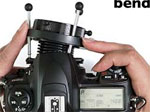 Perfect for getting creative, a Lensbaby offers a whole new way of looking at photography. Basically, it’s a bendable camera lens, which gives a selective, narrow focus, and is essentially a freely movable tilt-shift lens. Not convinced? You should be – check out the Flickr lensbaby group for inspiration. Buy them from Lensbabies direct, or get them from Amazon (US / UK)
Perfect for getting creative, a Lensbaby offers a whole new way of looking at photography. Basically, it’s a bendable camera lens, which gives a selective, narrow focus, and is essentially a freely movable tilt-shift lens. Not convinced? You should be – check out the Flickr lensbaby group for inspiration. Buy them from Lensbabies direct, or get them from Amazon (US / UK)
Finally, you should be able to pick up some pretty nice digital photo frames at this price, which never goes amiss.
Up to £100 / $200
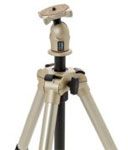 Up to £100 / $200, we are in the territory of some mighty fine tripods. It’s the first thing you should have as a photographer –
Up to £100 / $200, we are in the territory of some mighty fine tripods. It’s the first thing you should have as a photographer –
Look for brands like Velbon (US / UK), Slik (US / UK) or Manfrotto (US / UK) for the best quality!
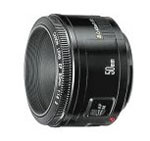 Around this price, you can also get prime lenses. If your photographer dearest one doesn’t have one, surprise them with a 50mm prime. No photographer should be without a good prime lens: They are nothing short of amazing, and for what they are, they’re complete bargains as well – I wrote about them earlier this year, if you’re curious!
Around this price, you can also get prime lenses. If your photographer dearest one doesn’t have one, surprise them with a 50mm prime. No photographer should be without a good prime lens: They are nothing short of amazing, and for what they are, they’re complete bargains as well – I wrote about them earlier this year, if you’re curious!
If they don’t have a camera yet, this price group also encompasses the fabulous Nikon Coolpix L11 (US / UK). A bargain-priced heavyweight, if I ever saw one, I mean, just read the review on Steve’s Digicams – sure, it’s basic, but hell, it’s brilliant.
Note that even advanced photographers should have a small pocket camera – a photographer without a camera isn’t a photographer, just a mug without his tools. Since a compact is a lot easier to carry around than a dSLR, you’re likely to shove the small camera in your pocket. Hey, my Digital IXUS (known as ELPH in the US) has gotten me out of more clumsiness than I dare think about.
Up to £200 / $400
 For this kind of price, you can buy a lot of tasty photography gear, but why not think out of the box? For £200, you can fly just about anywhere nowadays. Why not buy your favourite photographer an airline ticket to somewhere exciting? You can do a lot of picture-taking in about 3 days, you know.
For this kind of price, you can buy a lot of tasty photography gear, but why not think out of the box? For £200, you can fly just about anywhere nowadays. Why not buy your favourite photographer an airline ticket to somewhere exciting? You can do a lot of picture-taking in about 3 days, you know.
Alternatively, how about giving them a tent, and a huge ‘petrol voucher’? If this is for a good friend, invite them along on an epic journey by car. Sure, the oil prices are rising, but £200 / $400 still gets you pretty far, and there’s nothing quite as inspiring to photography as a good, solid road trip!
Up to £300 / $600
In this price class, you can also buy some seriously exciting lenses, but you might be best off buying a gift voucher from Amazon (Amazon US / UK), or another photography retailer, because, well, your gift-receiver is likely to know what s/he needs, and it’d be very annoying if you end up buying something that overlaps with their current photography equipment, or if they have decided what they need already!
Up to £500 / $1000
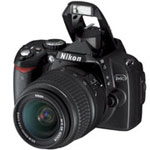 Oh my, now we are suddenly in proper digicam territory. You should be able to get a Canon 400D / Nikon D40 digital SLR camera body, and if the person you are buying for doesn’t have a dSLR, that’s definitely the way to go. The first step into the digital SLR world is definitely the most exciting, and you’ll be loved forever if you help them take that step!
Oh my, now we are suddenly in proper digicam territory. You should be able to get a Canon 400D / Nikon D40 digital SLR camera body, and if the person you are buying for doesn’t have a dSLR, that’s definitely the way to go. The first step into the digital SLR world is definitely the most exciting, and you’ll be loved forever if you help them take that step!
So, I wanna buy someone a camera. What should I get?
Well, based on a poll we ran a while ago:
n
What is your main camera?
n
What brand is your main digital camera?
… In other words, it seems as if most my readers have Canon dSLR cameras, so if you can afford it, get your loved one a Canon 400D, a Canon 40D or a Canon 5D – in that order of pricy-ness. Having said that, I have no beef with Nikon either, and their cameras are pretty much identical in quality, features, and price. Also read my post on choosing the right camera.
One thing I would say, though, is that if you are buying a compact camera, buy a camera from a company that is famous for making cameras, rather than electronics equipment. But I did a separate post about that a while ago, so you might want to go and read that, too.
Finally, remember that we tag all our stories quite cleverly, so if you ever want buying advice, check out all the stories tagged with buying advice. Clever, eh?
Oh, and finally: Happy Christmas! :)
—
A final note: You’ll have noticed that a lot of the links point to Amazon. This is partially out of laziness – I’ll probably do most of my christmas shopping via Amazon – but also because these links are so-called ‘affiliate links’. In other words, if you buy something after clicking on one of the links in this post, I get a kick-back from Amazon. That doesn’t mean you should only buy from them though – while they often have good prices, you can some times find better deals from elsewhere – shop around!
Do you enjoy a smattering of random photography links? Well, squire, I welcome thee to join me on Twitter -
© Kamps Consulting Ltd. This article is licenced for use on Pixiq only. Please do not reproduce wholly or in part without a license. More info.






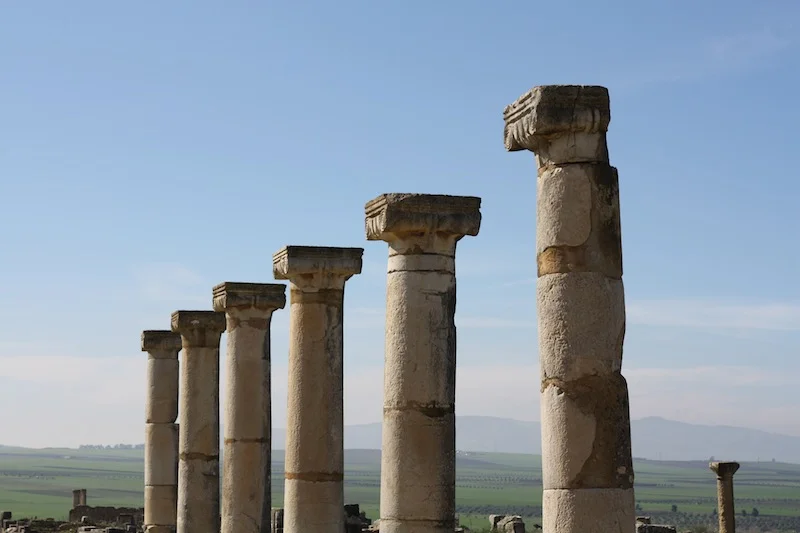
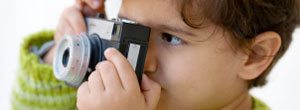
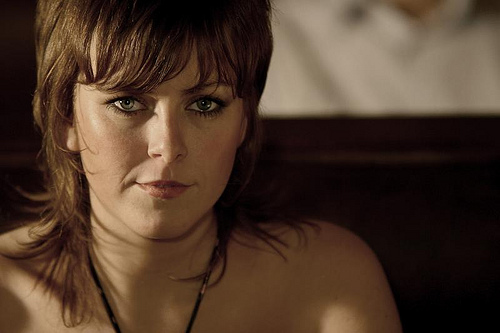
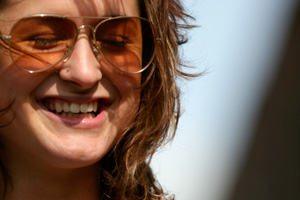 If someone tells you “LOL learn how 2 autofocus, you dweeb”, you need to do 2 things: Live in the happy knowledge that whilst your camera might have had an off day, at least you know how to string a grammatically correct sentence together.
If someone tells you “LOL learn how 2 autofocus, you dweeb”, you need to do 2 things: Live in the happy knowledge that whilst your camera might have had an off day, at least you know how to string a grammatically correct sentence together.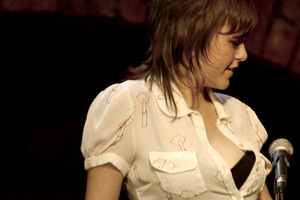 Ultimately, you are the photographer, and what you decide is how the final result gets done. Nobody can tell you what to do, and if you like your photo, then you’ve won one of the huge battles.
Ultimately, you are the photographer, and what you decide is how the final result gets done. Nobody can tell you what to do, and if you like your photo, then you’ve won one of the huge battles.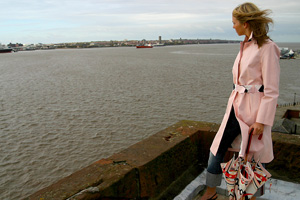 It’s the curse of all writers and poets: They spend months – years, even – crafting their masterpiece, and then nobody ‘gets’ it. They all ‘get it’ wrong. Tell you what though, that’s where part of the beauty comes from: If you are taking a photo which you meant to symbolise the innocence of youth, and your first 10 commenters feel it’s a strong commentary on, say, child abuse, then they are per definition right.
It’s the curse of all writers and poets: They spend months – years, even – crafting their masterpiece, and then nobody ‘gets’ it. They all ‘get it’ wrong. Tell you what though, that’s where part of the beauty comes from: If you are taking a photo which you meant to symbolise the innocence of youth, and your first 10 commenters feel it’s a strong commentary on, say, child abuse, then they are per definition right.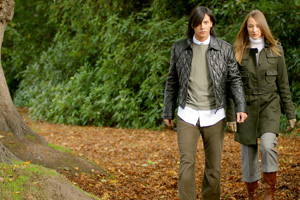 Remember that, just like you are not there to interpret your work, you’re not there to defend it either.
Remember that, just like you are not there to interpret your work, you’re not there to defend it either.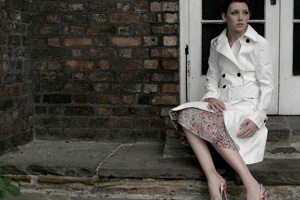 Technical aspects of your photographs might be objective: A photo can be accidentally over-exposed, blurry, or have some rubbish in the background which makes your photograph less-than-perfect. Once you start killing the technical foibles of your photographic work one by one (don’t go too perfectionist on it though, it’s not useful to end up deleting all of your photos because of every little detail), the actual creative work starts shining through, and this is where the worst potential for getting hurt comes from.
Technical aspects of your photographs might be objective: A photo can be accidentally over-exposed, blurry, or have some rubbish in the background which makes your photograph less-than-perfect. Once you start killing the technical foibles of your photographic work one by one (don’t go too perfectionist on it though, it’s not useful to end up deleting all of your photos because of every little detail), the actual creative work starts shining through, and this is where the worst potential for getting hurt comes from.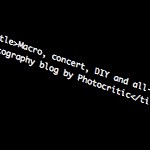
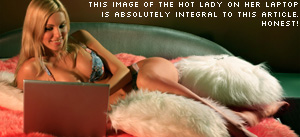 Luckily, there are quite a few things you can do as a photographer to make your site really zing in the search engines – and for the sake of making a nice round figure (and, of course, so the Digg and Reddit crowds will love it like a kitten loves tuna fish) – here’s a lovely top-10 list to get you started!
Luckily, there are quite a few things you can do as a photographer to make your site really zing in the search engines – and for the sake of making a nice round figure (and, of course, so the Digg and Reddit crowds will love it like a kitten loves tuna fish) – here’s a lovely top-10 list to get you started! For the sake of photography, you can basically optimise your site for two types of search: Text search (what most people think of when they think ‘search’) and image search (take a guess…).
For the sake of photography, you can basically optimise your site for two types of search: Text search (what most people think of when they think ‘search’) and image search (take a guess…).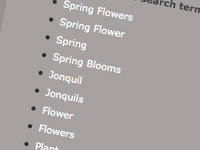 Context is important. The search engines want to know what your site is about. You might want to use the word “photo” in all of your filenames, to keep the context of a photography website consistent.
Context is important. The search engines want to know what your site is about. You might want to use the word “photo” in all of your filenames, to keep the context of a photography website consistent.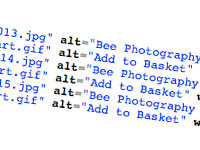 When you add an image to your website, you’re using an <img src="[URL]"> tag. You can – and should – add attributes to this tag, including an alt attribute.
When you add an image to your website, you’re using an <img src="[URL]"> tag. You can – and should – add attributes to this tag, including an alt attribute.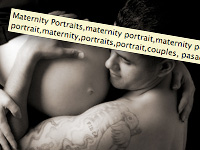 In addition to using keywords in your ALT tags, make sure that the actual file-name contains the same keywords.
In addition to using keywords in your ALT tags, make sure that the actual file-name contains the same keywords.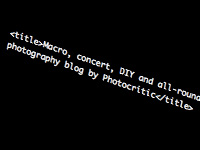 Use keywords in the page title. The page title is a header tag that causes text to appear in the top bar of the window when the page is open in your browser.
Use keywords in the page title. The page title is a header tag that causes text to appear in the top bar of the window when the page is open in your browser.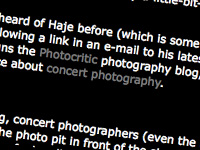 Anchor text is the text that appears on a page when there is a link; it’s the text that is underlined and/or in a special color to denote a link. These anchor text links should be descriptive, and – if possible – contain keywords relevant to the page you are linking to.
Anchor text is the text that appears on a page when there is a link; it’s the text that is underlined and/or in a special color to denote a link. These anchor text links should be descriptive, and – if possible – contain keywords relevant to the page you are linking to.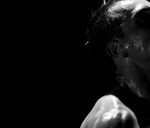
 If you want to have a go at using unsharp masking in the darkroom (heh – if you want to put yourself through stuff like that, let me tell you; I like you), here is a concise guide how it can be done. I have had a lot of surprises when using this technique – mostly positive surprises, but every now and then, things go very wrong. Even then, it looks interesting, if nothing else.
If you want to have a go at using unsharp masking in the darkroom (heh – if you want to put yourself through stuff like that, let me tell you; I like you), here is a concise guide how it can be done. I have had a lot of surprises when using this technique – mostly positive surprises, but every now and then, things go very wrong. Even then, it looks interesting, if nothing else.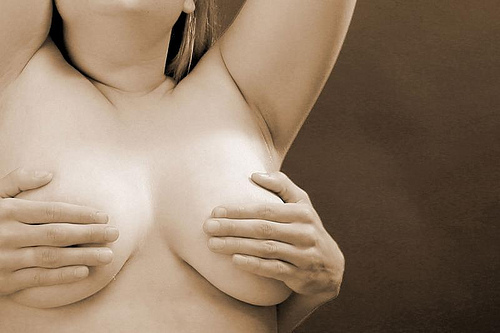
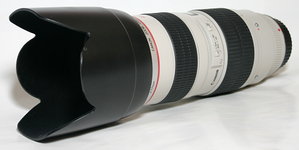
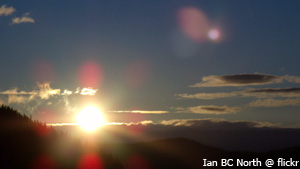
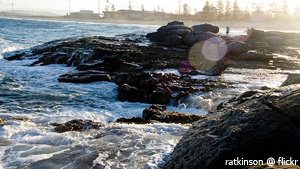 A second way to test for lens flare is what is known as the ‘window test’. Aim the camera someplace indoors, but have a bright window just out of the view of the lens. If your image, upon developing ended up with the tell tale signs of lens flare, you know your camera can’t handle that sort of situation so well.
A second way to test for lens flare is what is known as the ‘window test’. Aim the camera someplace indoors, but have a bright window just out of the view of the lens. If your image, upon developing ended up with the tell tale signs of lens flare, you know your camera can’t handle that sort of situation so well.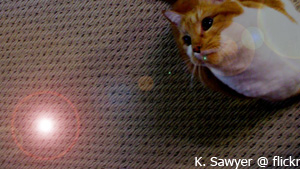 Okay, so I thought we were trying to avoid lens flare. Why would Photoshop come up with something people try to avoid? For the simple fact that lens flare shouldn’t always be avoided. In fact, it can a little something extra to your images when used in the right circumstances.
Okay, so I thought we were trying to avoid lens flare. Why would Photoshop come up with something people try to avoid? For the simple fact that lens flare shouldn’t always be avoided. In fact, it can a little something extra to your images when used in the right circumstances.
 £10 also gets you DVDs so you could could consider getting a film which is vaguely photography themed. City of God (Cidade de Deus) is a fantastic film which is about a Brazilian kid who turns into a photographer for a newspaper. Gripping, moving, not too expensive, and photography related – what more could you want? Of course, you get extra bonys point and street cred for buying a foreign arthaus film! (
£10 also gets you DVDs so you could could consider getting a film which is vaguely photography themed. City of God (Cidade de Deus) is a fantastic film which is about a Brazilian kid who turns into a photographer for a newspaper. Gripping, moving, not too expensive, and photography related – what more could you want? Of course, you get extra bonys point and street cred for buying a foreign arthaus film! ( In this price group, the definite winner is the Gorilla Pod. Sure, it looks daft as a paintbrush, but it always gets looks. I got one for review from Joby recently, and I had to call them up and ask if I could please keep it – it really is that good. Basically, it’s a fully-fledged tripod that weighs next to nothing. Wrap it around just about anything (so far, I’ve had it around a car seat, around a desk, around a street lamp, and around a pub bar stool), and your camera is rock-solid. It beats the other micro-tripods hands down. Read more about the
In this price group, the definite winner is the Gorilla Pod. Sure, it looks daft as a paintbrush, but it always gets looks. I got one for review from Joby recently, and I had to call them up and ask if I could please keep it – it really is that good. Basically, it’s a fully-fledged tripod that weighs next to nothing. Wrap it around just about anything (so far, I’ve had it around a car seat, around a desk, around a street lamp, and around a pub bar stool), and your camera is rock-solid. It beats the other micro-tripods hands down. Read more about the  Perfect for getting creative, a
Perfect for getting creative, a  Up to £100 / $200, we are in the territory of some mighty fine tripods. It’s the first thing you should have as a photographer –
Up to £100 / $200, we are in the territory of some mighty fine tripods. It’s the first thing you should have as a photographer – Around this price, you can also get prime lenses. If your photographer dearest one doesn’t have one, surprise them with a 50mm prime. No photographer should be without a good prime lens: They are nothing short of amazing, and for what they are, they’re complete bargains as well – I
Around this price, you can also get prime lenses. If your photographer dearest one doesn’t have one, surprise them with a 50mm prime. No photographer should be without a good prime lens: They are nothing short of amazing, and for what they are, they’re complete bargains as well – I  Oh my, now we are suddenly in proper digicam territory. You should be able to get a
Oh my, now we are suddenly in proper digicam territory. You should be able to get a 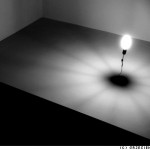
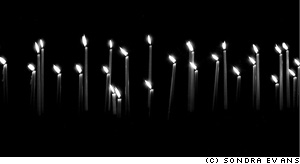 Minimalism is one of those concepts that’s difficult to wrap your head around – In one way, it can be described as just keeping it simple, but there’s a lot more to taking a good minimalist photograph.
Minimalism is one of those concepts that’s difficult to wrap your head around – In one way, it can be described as just keeping it simple, but there’s a lot more to taking a good minimalist photograph.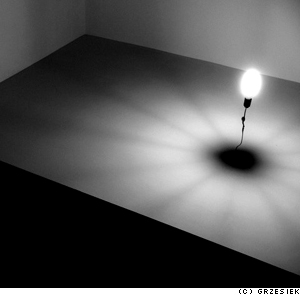 The minimalist movement started in the late 1960s, which sort of makes sense: I’m all for the music of the era, but tie-dye would do my fucking nut – no wonder people were striving for simplicity. As a stepping stone to post-modernism, minimalism works very well when combined with surrealism – and that’s where Grzesiek’s photograph comes in…
The minimalist movement started in the late 1960s, which sort of makes sense: I’m all for the music of the era, but tie-dye would do my fucking nut – no wonder people were striving for simplicity. As a stepping stone to post-modernism, minimalism works very well when combined with surrealism – and that’s where Grzesiek’s photograph comes in…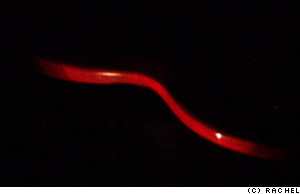 To me, minimalism is all about doing creative things with lighting: by being selective about what you light and how you have a fantastic opportunity to pick out details from a scene.
To me, minimalism is all about doing creative things with lighting: by being selective about what you light and how you have a fantastic opportunity to pick out details from a scene. Rather than making what you’ve carefully lit the center of the focus of the image, you’re essentially drawing the onlooker’s attention on what isn’t there – check out the image to the right.
Rather than making what you’ve carefully lit the center of the focus of the image, you’re essentially drawing the onlooker’s attention on what isn’t there – check out the image to the right.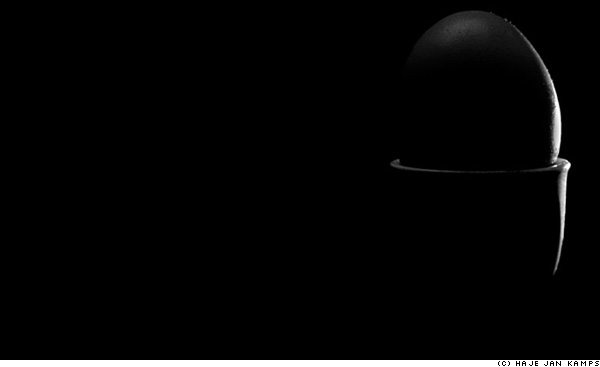
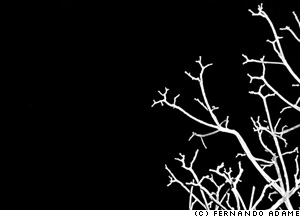 The egg-in-eggcup is an odd one as well, because it conforms quite strongly to the
The egg-in-eggcup is an odd one as well, because it conforms quite strongly to the 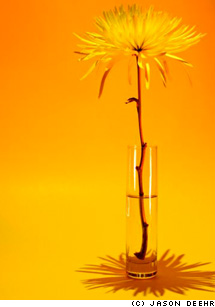 Colour in minimalism
Colour in minimalism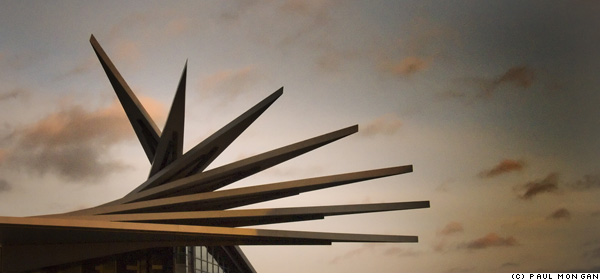
 I was torn as to whether the photo can be labelled as ‘minimalist’ or not – but similarly, it’s easy to see how the very same scene could be photographed at a different time of day, for a much stronger impact.
I was torn as to whether the photo can be labelled as ‘minimalist’ or not – but similarly, it’s easy to see how the very same scene could be photographed at a different time of day, for a much stronger impact.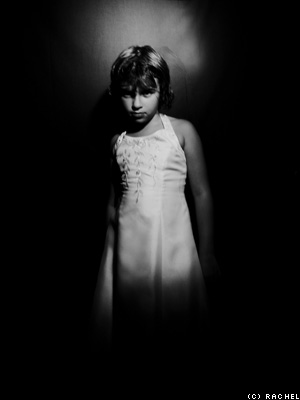 Obviously, there’s nothing to stop you from including people in your adventures in minimalism either – It’s just far more difficult.
Obviously, there’s nothing to stop you from including people in your adventures in minimalism either – It’s just far more difficult. Rachel’s experiments in keeping portraiture simple, however are particularly effective. The style of the image on the right remind me of the work of the amazing Katie Cooke (who runs the
Rachel’s experiments in keeping portraiture simple, however are particularly effective. The style of the image on the right remind me of the work of the amazing Katie Cooke (who runs the 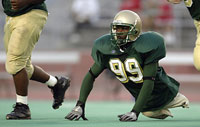
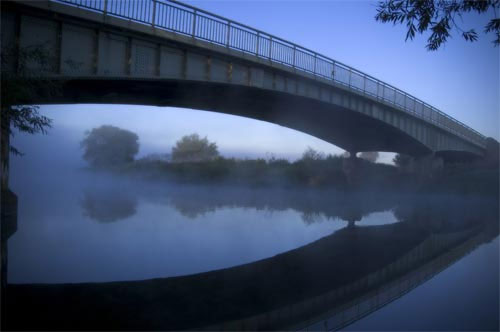
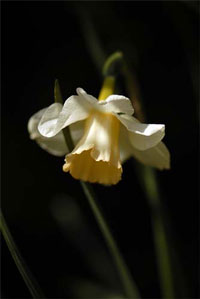 I’ve stumbled across Jason’s site,
I’ve stumbled across Jason’s site, 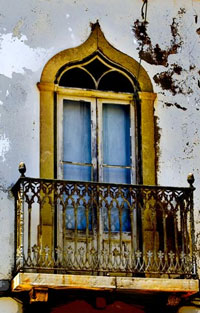 “Basically”, he says, “I launched it as a site to try and sell my own pictures as canvas and poster prints 5 months ago. Then I realised that there are so many really good photographers out there, completely unknown, yet they have no idea about the internet or how to create a website to sell their work and earn some extra cash.”
“Basically”, he says, “I launched it as a site to try and sell my own pictures as canvas and poster prints 5 months ago. Then I realised that there are so many really good photographers out there, completely unknown, yet they have no idea about the internet or how to create a website to sell their work and earn some extra cash.”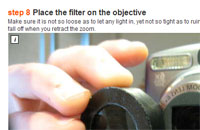
 The instructable to
The instructable to 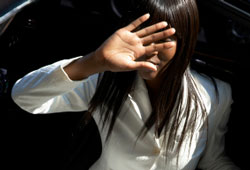



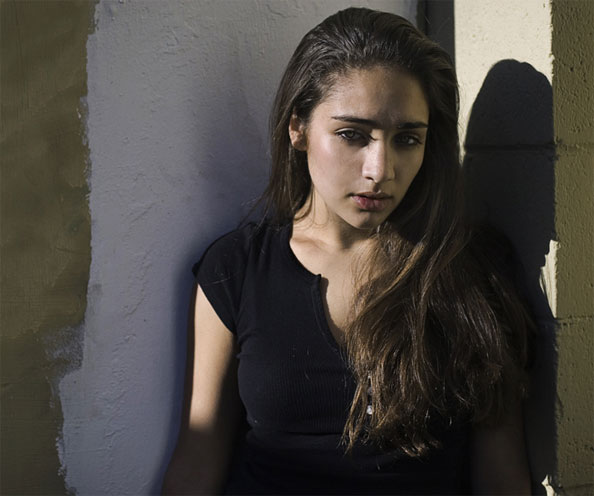
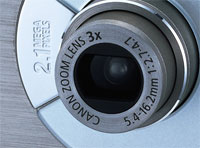

 300 was shot entirely using blue- and green-screen, which is a technology which allows you to create the backgrounds digitally. Of course, the actors use props etc, but the fact remains that nearly 90% of all the footage used in the film involves various types of visual effects. The film was in post production for nearly a year — ages, in film industry terms.
300 was shot entirely using blue- and green-screen, which is a technology which allows you to create the backgrounds digitally. Of course, the actors use props etc, but the fact remains that nearly 90% of all the footage used in the film involves various types of visual effects. The film was in post production for nearly a year — ages, in film industry terms.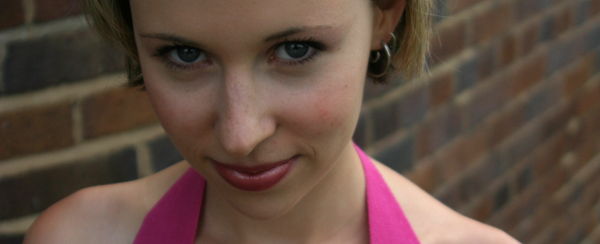
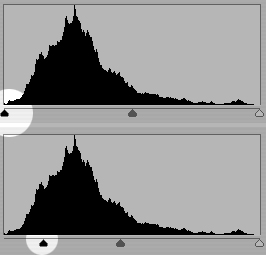 Now, to apply the ‘crush’ technique, you need to adjust the levels on your image so the black comes out stronger. Obviously, you need to do these changes only to a selection of your image, otherwise, it’ll come out way too dark.
Now, to apply the ‘crush’ technique, you need to adjust the levels on your image so the black comes out stronger. Obviously, you need to do these changes only to a selection of your image, otherwise, it’ll come out way too dark.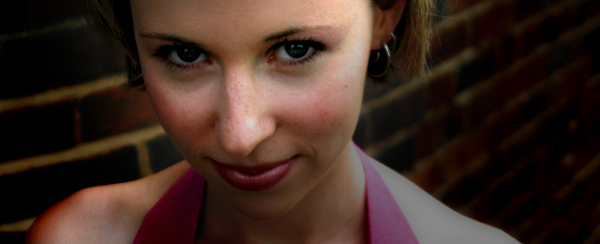
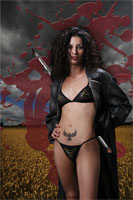 When you’ve got the contrast right, you’ve got to start playing with the colour — it’s got to be right, after all.
When you’ve got the contrast right, you’ve got to start playing with the colour — it’s got to be right, after all.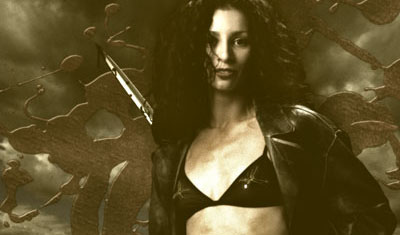
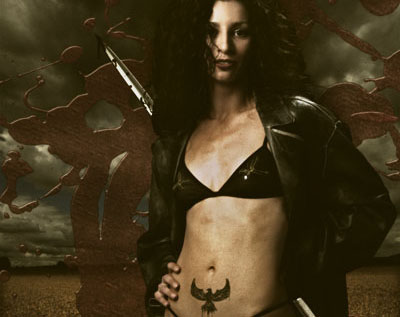
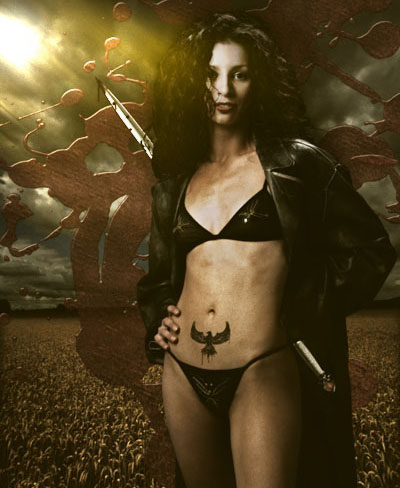
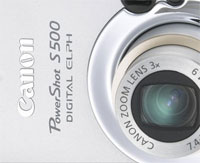
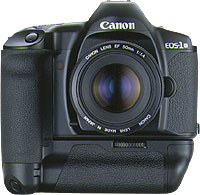 Throughout my photographic history, I’ve had a lot of different cameras. I started with a Canon A-1 SLR (which I still have!), and then went through a series of exciting cameras. I had a Canon RS, which used to be the fastest camera Canon ever made. I had a Canon EOS 1Nhs, which was pretty damn quick as well. Then I went digital, and had a D60, 10D, 20D, 300D, and now I’m on a 30D. Why such a quick succession? Well, I used to work as a photographer, and cameras get used a lot. They get bumped into things, they get dropped, and the shutter mechanism gets slack after taking tens of thousands of photos. Also, I’m a gadgets nut, and I love playing with a new camera. Sure, there are no massive differences between the D60, 10D, 20D and 30D, but for every upgrade, there was a little bit more speed, a few new toys, and they just got better and better.
Throughout my photographic history, I’ve had a lot of different cameras. I started with a Canon A-1 SLR (which I still have!), and then went through a series of exciting cameras. I had a Canon RS, which used to be the fastest camera Canon ever made. I had a Canon EOS 1Nhs, which was pretty damn quick as well. Then I went digital, and had a D60, 10D, 20D, 300D, and now I’m on a 30D. Why such a quick succession? Well, I used to work as a photographer, and cameras get used a lot. They get bumped into things, they get dropped, and the shutter mechanism gets slack after taking tens of thousands of photos. Also, I’m a gadgets nut, and I love playing with a new camera. Sure, there are no massive differences between the D60, 10D, 20D and 30D, but for every upgrade, there was a little bit more speed, a few new toys, and they just got better and better.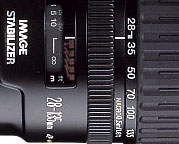 The first lens I bought for my kit was the 28-105 f/3.5 zoom from Canon. It is a decent lens, but in retrospect, I regretted buying it. I quickly replaced it with the 28-135 f/3.5 image stabilized lens. When I go travelling and have to pick a single lens, is the lens that gets to go on adventure with me. It’s wide enough to be useful for most landscape stuff, and zooms in far enough to be good for portraiture, wildlife, and all that. It’s also a macro lens, and it works surprisingly well at taking photos up close, too. It’s not a cheap lens, and it’s not all that sharp either, but it has a special place in my heart nonetheless…
The first lens I bought for my kit was the 28-105 f/3.5 zoom from Canon. It is a decent lens, but in retrospect, I regretted buying it. I quickly replaced it with the 28-135 f/3.5 image stabilized lens. When I go travelling and have to pick a single lens, is the lens that gets to go on adventure with me. It’s wide enough to be useful for most landscape stuff, and zooms in far enough to be good for portraiture, wildlife, and all that. It’s also a macro lens, and it works surprisingly well at taking photos up close, too. It’s not a cheap lens, and it’s not all that sharp either, but it has a special place in my heart nonetheless…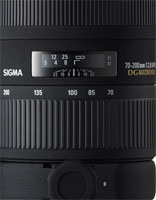 The next lens I bought was a 70-200 f/2.8 EX APO lens from Sigma. It’s bloody expensive, but it’s also one of the best lenses I own. Because it stays at f/2.8 throughout its zoom range (in general, zoom lenses that have the same aperture throughout their zoom range are of better quality for reasons that are slightly beyond this write-up, I’ll do that one as a separate article some day), you get a long lens that’s perfect for concert photography. Which, incidentally, is why I bought it. (more about concert photography
The next lens I bought was a 70-200 f/2.8 EX APO lens from Sigma. It’s bloody expensive, but it’s also one of the best lenses I own. Because it stays at f/2.8 throughout its zoom range (in general, zoom lenses that have the same aperture throughout their zoom range are of better quality for reasons that are slightly beyond this write-up, I’ll do that one as a separate article some day), you get a long lens that’s perfect for concert photography. Which, incidentally, is why I bought it. (more about concert photography 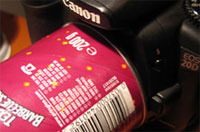 Other stuff in my kit bag is the Lensbaby lens, which I’ve fallen completely in love with (as explained
Other stuff in my kit bag is the Lensbaby lens, which I’ve fallen completely in love with (as explained